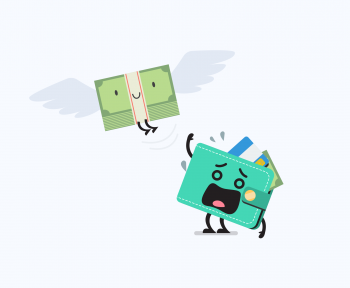PFP NFTs have become increasingly popular recently, with even some high-profile figures embracing the trend. One notable recent sale involved the American DJ and producer Deadmau5, who fetched a stunning $100,000 per PFP NFT. Rapper Lil Uzi Vert, for example, became known for a PFP NFT depicting him in cartoon form. To add to the fun, Elon Musk tweeted a picture of a PFP NFT of his dog, so everyone may join in.
When well-known artists like these promote PFP NFTs, it’s evident that they’re on the cusp of becoming a hot product in the field of digital art. But what are they, exactly, and why do they matter so much? And that’s what this article intends to do: investigate. The exciting world of PFP NFTs, from their origins to their prospective effects on the art world, is about to be revealed.
Not only have celebs like Deadmau5, Lil Uzi Vert, and Elon Musk gotten in on the PFP NFT trend, but so have a variety of others. Celebrities like Jay-Z and Beyoncé have helped boost sales of Bored Ape Yacht Club NFTs by putting them on their phone cases. Mark Cuban, Shark Tank star and billionaire entrepreneur, has also joined the fray by purchasing a Cryptopunk NFT for a whopping $580,000.
Why do PFP NFTs Matter?
PFP NFTs are gaining attention, but not just from the affluent and famous. PFP NFTs offer a new means for artists to commercialise their work and for collectors to acquire one-of-a-kind pieces, and as a result, more and more regular people are getting involved in the realm of digital art ownership. No matter if you’re like Cryptopunks, Bored Ape Yacht Club, or some other PFP NFT, you can’t dispute their significance in contemporary digital art.
Well, enough small talk; let’s get down to business. In this post, we’ll investigate the ins and outs of PFP NFTs, giving you the scoop on everything you need to know. We promise not to overwhelm you with dry academic language; instead, we’ll keep things casual and conversational. The thrilling world of PFP NFTs awaits, so kick back and enjoy the ride!
What are PFP NFTs?
Non-fungible PFP NFTs are used to prove ownership of a specific digital image or piece of art. Most frequently, these images serve as a user’s profile photo on social media websites like Twitter, Discord, and Clubhouse. The uniqueness of PFP NFTs stems from their status as singular assets that can neither be copied nor substituted by any other means. The creator, date of production, and rarity of each PFP NFT are only some of the pieces of metadata that set it apart.
PFP NFTs are significant for a number of reasons. The first benefit is that they make it possible for digital artists to earn money from their work. Without the middlemen of art galleries or auction houses, artists can save time and money by setting up PFP NFTs to sell their works directly to collectors and admirers. This means that artists can make more money from their work and have greater control over the distribution of their works.
To continue, PFP NFTs give supporters the opportunity to acquire a rare and one-of-a-kind piece of digital art. This adds a level of prestige and scarcity to the artwork that can’t be achieved with more common forms of digital art. PFP NFTs can be bought and sold by collectors on secondary marketplaces, expanding the digital art market’s accessibility and liquidity.
In conclusion, PFP NFTs may well usher in a new era in digital personas. Owning a PFP NFT gives users the ability to present a distinct and independent online identity. Because of this, digital art has the potential to foster a more genuine and inventive online community.
PFP NFTs: A Brief History
While PFP NFTs have only lately become prominent in the realm of digital art, their history is brief. In 2017, Larva Labs released CryptoPunks, a collection of 10,000 original pixel art figures that became the first PFP NFT project to garner significant attention. After being released as a new form of token (NFT), CryptoPunks immediately gained collectible status, with some fetching prices in the millions.
Bored Ape Yacht Club, Pudgy Penguins, and Gutter Cat Gang are just a few of the additional PFP NFT initiatives that have appeared since. The success of CryptoPunks has served as inspiration for these other initiatives, which take the basic idea of PFP NFTs and give it their own spin.
If you’re interested in digital art or blockchain technology, PFP NFTs are a promising new trend. They allow creators to earn money from their efforts, collectors to acquire rare digital assets, and users to share their individuality and creativity in a public forum. There is little doubt that PFP NFTs have left an indelible mark on the field of digital art, and while their history is still being written, they are not going anywhere anytime soon.



